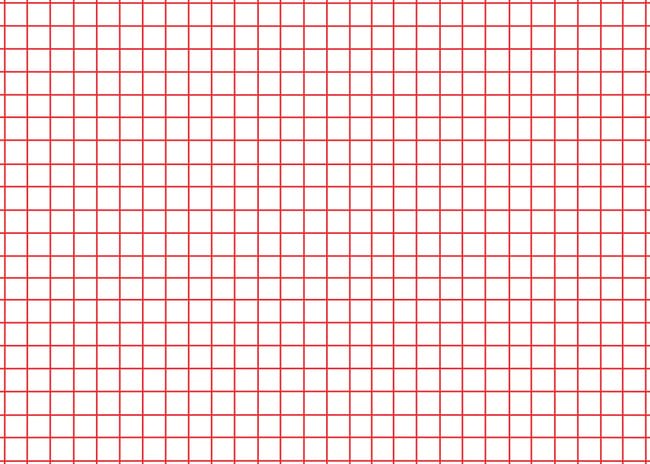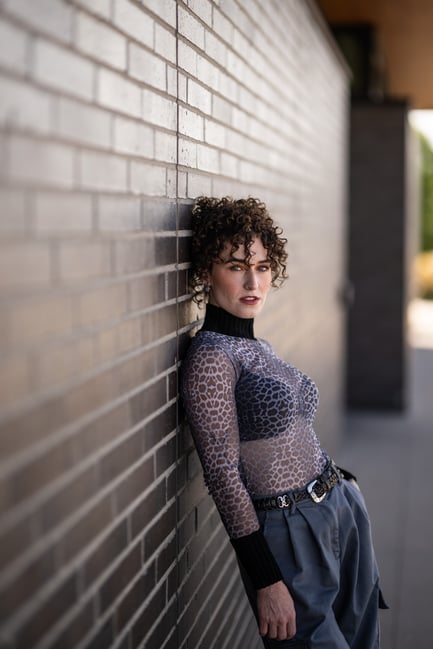Focusing Characteristics
The Nikon Z 58mm f/0.95 Noct is a manual focus lens. It goes without saying that this is highly unusual for a first-party lens in today’s world, barring occasional exceptions for tilt-shift lenses. And given the very bright maximum aperture of f/0.95, focusing perfectly with this lens can be a real challenge.
On the bright side, today’s mirrorless cameras are probably better geared toward critical manual focus than any camera of the past. Tools like focus peaking, live view magnification, and in-body image stabilization make it possible to compose and focus with pinpoint accuracy even when focusing manually. The huge focus throw on the Noct’s manual focus ring helps out a lot in this regard.

Even so, it’s not a lens meant for moving fast. It also isn’t a lens that works well for moving subjects, especially unpredictable subjects. You can probably get away with sharp photos at f/2.8 if you’ve got good manual focus technique, but a moving subject at f/0.95? That’s a different story.
Your best option, short of switching to an autofocus lens, is to shoot a burst of photos and know that 19 out of 20 photos simply will be out of focus. It feels like a wasteful approach, but with a sufficiently large memory card, you can make it work. Still, if you often shoot fast-moving subjects – or even slightly moving subjects, like candid portraits – the Nikon Z 50mm f/1.2 S makes a lot more sense than the Noct on paper.
Distortion
The Nikon Z 58mm f/0.95 Noct has hardly any distortion, measuring a mere 0.18% pincushion distortion in the lab. This is completely negligible, even when there are straight lines in your photo. We’re starting off strong!
Here’s a simulation of 0.18% pincushion distortion:

(In practice, I’d say it’s a little more visible than this, with a bit of mustache distortion that leads to a bit of pinching near the edges. Imatest’s numbers tend to undercount wavy/mustache distortion slightly. Even so, it’s minimal enough on this lens as to be irrelevant for most photos, even architecture, and can be easily corrected if desired.)
Vignetting
The Noct is well-corrected for vignetting, including wide open. Here’s a full chart of vignetting levels:

Since the wide apertures are so important to the nature of this lens, I’d also like to show a more granular chart with each 1/3 stop from f/0.95 to f/2:

Impressively, the lens already has minimal vignetting by f/1.2, and by f/1.6, it is completely negligible. There aren’t a lot of lenses where you can say that! This is an excellent result if I’ve ever seen one, especially for a fast prime.
Even wide open at f/0.95, the maximum vignetting of 1.67 stops is perfectly reasonable. You may end up correcting it in some images, but it’s not high enough to bother most of the time. (As a side note, this test indicates that f/0.95 is not meaningfully different than f/1.0 on this lens. You’ll also see that in our sharpness tests.)
Lateral Chromatic Aberration
There is a low amount of lateral chromatic aberration on the Nikon Z 58mm f/0.95 Noct. Here’s the chart:

Anything under about one pixel is almost impossible to notice in real-world images, even with chromatic aberration corrections turned off. The Nikon Z 58mm f/0.95 stays under that threshold at every aperture, hovering in the range from 0.71 to 0.77 pixels throughout. You will rarely, if ever, need to correct lateral chromatic aberration on this lens.
Sharpness
The Noct is about as sharp as a lens can get! Here’s how it performs in the lab:

It’s a nearly perfect lens all-around. The performance at f/2.8 marks a new record for the highest sharpness we have measured in a lens’s corners! And the central and midframe performance are very close to the highest we’ve ever measured, too. Even the sharpness at f/0.95 is quite good.
To fully show the performance at wide apertures, I also tested the Noct at each 1/3 stop from f/0.95 to f/2:

And finally, I’m showing a graph below that eliminates the effects of field curvature. When creating the following chart, I used only the sharpest result among all the test photos as I moved the camera forward and backward on macro rails by millimeters at a time. Some of the midframe numbers are the same as in the prior chart – that’s because they were sharpest in the same photo where the center was sharpest. (This is a sign of very minimal field curvature and definitely a good thing.) All in all, the midframes barely improved, although the corners did gain some additional sharpness at the widest apertures, which indicates mild field curvature.

Keep in mind that the graph above will not be relevant if the subject is a flat field (for example, when shooting the night sky or photographing from a distant overlook). But if your subject is in the midframes or corners, and the rest of the photo is not supposed to be in focus, this is the maximum sharpness you can expect to get in a particular region of the frame.
Early Access:
See all of our sharpness tests weeks (or months) before we publish the full review when you become a Photography Life Member. Photography Life Members can also access our Online Workshops, monthly photo critiques, Creative Landscape Photography eBook, and more. Thank you for supporting Photography Life – we are an ad-free website thanks to you!
Coma
Related to sharpness is coma, a lens aberration that can make dots of light in the corner of a photo look like smears. Coma isn’t usually visible in everyday photography, but for something like Milky Way photography, it can be a factor. Normally, a 58mm lens would not be a good choice for Milky Way photography, since you need to use shutter speeds of about 5-8 seconds at most if you want sharp stars. But when the maximum aperture is f/0.95? That’s a different story.
Below are extreme crops from the top-left corner of the Nikon Z7 with the Nikon Z 58mm f/0.95 Noct. I cropped the Nikon Z7’s 45-megapixel sensor down to 1319 × 1979 pixel crops and didn’t do any resizing; it’s a direct excerpt from the original image. Click to see it full size:


This is simply incredible for an f/0.95 lens! Yes, there is a little coma, but this would be great performance even for an f/1.4 lens. To achieve it while capturing twice as much light as f/1.4 is unheard of.
Bokeh
Bokeh is another word for the qualities of the out-of-focus blur in a photo. With a maximum aperture of f/0.95, you’ll certainly get out-of-focus backgrounds with the Noct! But how do those backgrounds look? Pretty amazing to me.
Frankly, the main reason why the bokeh on this lens is so good is simply the f/0.95 maximum aperture. You’ll get creamy backgrounds very easily with this lens, more than almost any other optic. Here’s an example of how even a relatively wide portrait photo has a shallow depth of field at f/0.95:

Focus more closely, and you’ll find that the depth of field is quite literally paper-thin! I almost get wet-plate photography vibes at this point, especially in black and white.

In short, the f/0.95 aperture is doing most of the heavy lifting where this lens’s bokeh is concerned, but that’s not a bad thing. The 11-blade rounded aperture also does an excellent job as you stop down. Notice how in the f/2 photo below, the out-of-focus specular highlights are just as round as they are in the f/0.95 photo:


Here’s a crop of the bokeh at f/2 to show what I mean:

This is an excellent result! I’m glad Nikon went with the 11-blade rounded aperture here – it definitely works wonders. (Two other Nikon Z lenses also have an 11-blade aperture – the 85mm f/1.2 S and the 135mm f/1.8 Plena.)
Despite all the amazing qualities of the Nikon Z 58mm f/0.95 Noct’s bokeh, there are a couple of counterpoints I should list. First, wide open, there is some clear “cat’s eye” shape to bokeh along the edges of the image. As I’ve said before, cat’s eye bokeh doesn’t personally bother me very much, but bokeh is subjective, and some photographers don’t like it.

More rarely, I did notice some texturing in smaller, dimmer specular highlights. This is likely a product of the complex optical construction of the Noct, complete with three aspherical elements. It didn’t appear in most of my photos, just a few. But you can see it in the crop of the following image:


Even at its worst, it’s pretty subtle. You may be able to find it if you go out of your way, but it won’t be obtrusive in regular photography.
Finally, the Noct is well-controlled for color fringing (AKA longitudinal chromatic aberration). In most photos, I didn’t notice any. In the worst-case scenario, it looked like this – the product of f/0.95, a very backlit subject, and a lot of shadow recovery:


This is definitely not perfect, but given the aperture and the backlighting, it could be a lot worse. Still, you may find yourself needing to correct this lens’s longitudinal chromatic aberration when high-contrast subjects are slightly out of focus.
Taking all these factors into account, Nikon has a bokeh champ on their hands with the Z 58mm f/0.95 Noct. At maximum aperture, this lens creates creamy backgrounds almost effortlessly, and even upon stopping down, the background blur looks great. I had a blast shooting with the Noct at f/0.95, and I’m not even a portrait photographer!
Sunstars and Flare
Given the sheer complexity of the Nikon Z 58mm f/0.95 Noct, I expected a bit of flare, but it performs well in this regard, too. There are some ghosts if you point directly at the sun, but the anti-glare coatings do a great job keeping it to a minimum. Sunstars on this lens aren’t very good, though, in part because of the rounded 11-blade aperture.

I have no complaints about this performance whatsoever!
The next page of this review dives into the sharpness numbers a bit more, with some comparisons against other lenses that Nikon users may be considering. So, click the menu below to go to “Lens Comparisons”:
Table of Contents